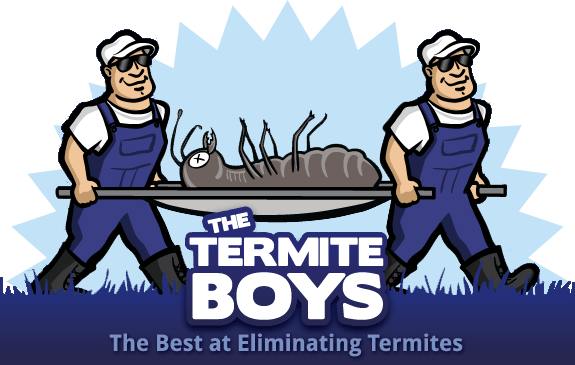Termites may be small, but their impact on structures and ecosystems can be profound. Boston, with its blend of historic architecture and thriving urban environment, is home to specific termite species that homeowners and property managers need to understand. Recognizing these species and learning how they interact with their environment can save time, money, and headaches in the long run.
This blog will explore the termite species found in Boston, their unique characteristics, and why it’s crucial to identify and manage these pests effectively. We’ll also provide practical advice on mitigating termite damage while protecting your property.
Termites in Boston: A Quick Overview
Termites are social insects that live in colonies, working collectively to feed on cellulose-based materials such as wood, dead plants, and even paper. Though they play a critical role in breaking down organic material in the ecosystem, they can wreak havoc on homes and other wooden structures. Boston’s climate, with humid summers and chilly winters, provides an ideal environment for certain termite species to thrive.
The most common species in Boston include subterranean termites, which are well-known for their destructive tendencies. Understanding these species is the first step in protecting your property from termite damage.
Types of Termite Species Found in Boston
1. Subterranean Termites (Genus Reticulitermes)
Subterranean termites are Boston’s most prevalent type of termite. These termites build massive underground colonies and create mud tubes to access food sources above ground. They are responsible for most termite damage in Boston, making them the top species to watch out for.
Key Characteristics of Subterranean Termites:
- Appearance: Light tan or cream-colored workers with darker heads. Soldiers have larger heads with prominent mandibles.
- Habitat: They live in moist soil and form tunnels to reach food sources like wood beams, foundations, and flooring.
- Signs of Infestation:
-
- Mud tubes on walls, foundations, or crawl spaces.
- Swarms of winged termites during warmer months.
- Hollow-sounding wood or cracked paint on wooden surfaces.
Why They’re Concerning:
Subterranean termites are highly destructive, working 24/7 to consume structural wood. Their damage often goes unnoticed until it becomes severe, leading to costly repairs.
2. Drywood Termites (Cryptotermes spp.)
While less common in Boston than in warmer regions, drywood termites can still pose a threat, especially in imported wooden furniture or coastal properties. Unlike subterranean termites, they don’t require soil to survive and instead infest dry wood directly.
Key Characteristics of Drywood Termites:
- Appearance: Cream-colored workers and light brown soldiers with wider heads.
- Habitat: Found in dry, undecayed wood, such as wall framing, furniture, and hardwood floors.
- Signs of Infestation:
-
- Small piles of wood-colored pellets (frass) near infested areas.
- Tiny holes in the wood where termites have burrowed.
- Damaged wooden furniture.
Why They’re Concerning:
Drywood termites tend to be sneaky pests, as they don’t leave behind mud tubes. Their infestations spread slowly but can lead to extensive damage over time if not addressed promptly.
3. Dampwood Termites (Zootermopsis spp.)
Dampwood termites are larger than other termite species and are typically attracted to moist or decaying wood, often found in damp basements or leaky roofs. While they are less common in Boston, dampwood termites can still infest structures with water damage.
Key Characteristics of Dampwood Termites:
- Appearance: Larger than other termite species, with reddish-brown soldiers and grayish workers.
- Habitat: Damp, decaying wood or areas with heavy moisture, such as water-damaged wooden beams or gutters.
- Signs of Infestation:
-
- Large, moist tunnels within wood.
- Proximity to water sources, such as leaking pipes or standing water.
- Swarming activity around damp environments.
Why They’re Concerning:
Their preference for moisture means dampwood termites are usually a sign of a larger problem, such as poor drainage or structural water damage. Addressing their presence often requires fixing the underlying moisture issue first.
Why Identifying Termites Matters
Each termite species requires a unique management approach. Misidentifying a termite infestation can lead to inefficient treatments and wasted resources. For instance:
- Treating a subterranean termite infestation without sealing underground entry points might only provide temporary relief.
- Applying standard insecticides to drywood termites might not reach their hidden colonies within furniture or walls.
Accurately identifying the termite species in your home allows pest control professionals to target the infestation effectively and prevent future outbreaks.
Tips to Protect Your Property from Termites
While professional pest control is often the best solution for termite infestations, there are preventive steps you can take to minimize the risk:
1. Remove Moisture Sources
- Fix leaky pipes, faucets, and roofs immediately.
- Ensure gutters and downspouts direct water away from your foundation.
2. Optimize Ventilation
- Keep crawl spaces well-ventilated and dry.
- Use a dehumidifier in moisture-prone areas like basements.
3. Inspect Wooden Structures
- Regularly check for signs of termite activity, including mud tubes, wood damage, or swarmers.
- Store firewood and wooden debris at least 20 feet away from your home.
4. Partner with Professionals
- Schedule annual termite inspections with licensed experts to catch infestations early.
- Consider pre-construction termite treatments if building a new home or addition.
5. Use Treated Wood
For renovations or new construction projects, use pressure-treated or naturally termite-resistant wood types. This can deter termites from establishing colonies in your structures.
How Boston Residents Can Stay Safe
Termites remain a silent but significant threat to Boston properties. By staying informed about the species in the area and implementing preventive measures, you can protect your home and enjoy peace of mind. If you suspect termites in your property, don’t wait to seek professional help. Early detection and treatment are key to minimizing damage and repair costs.

